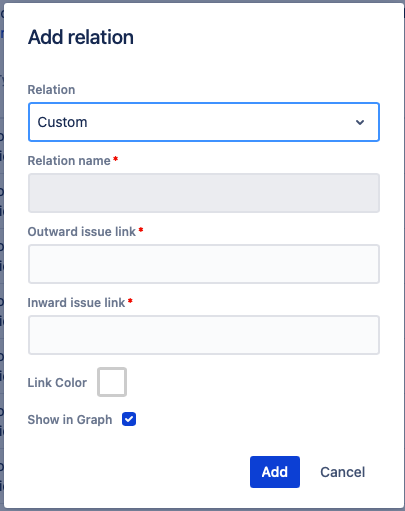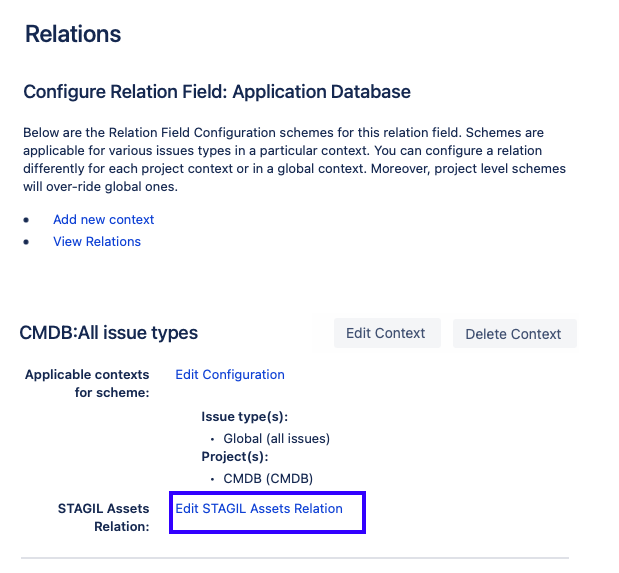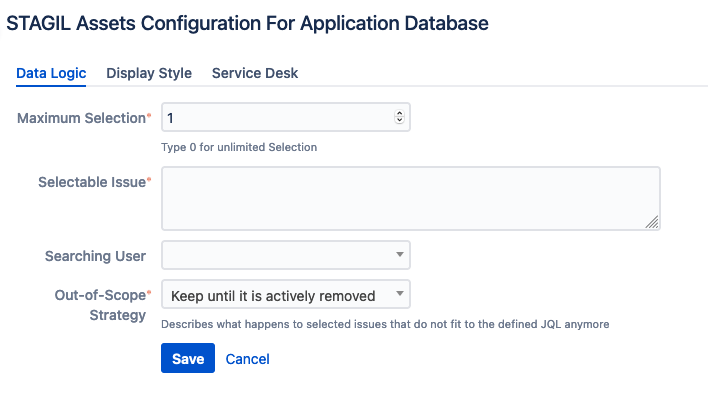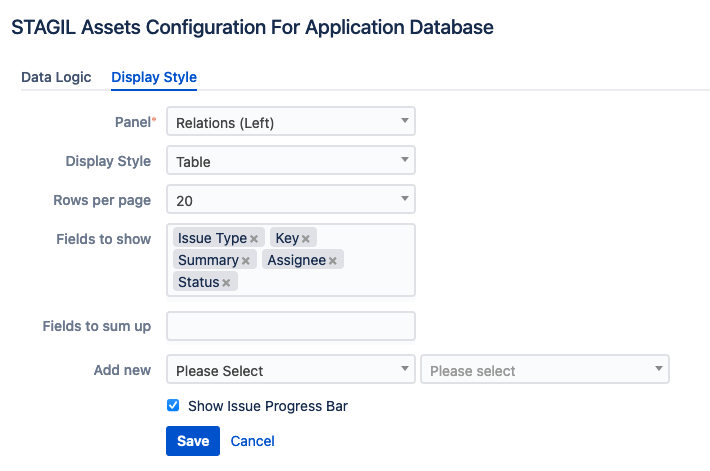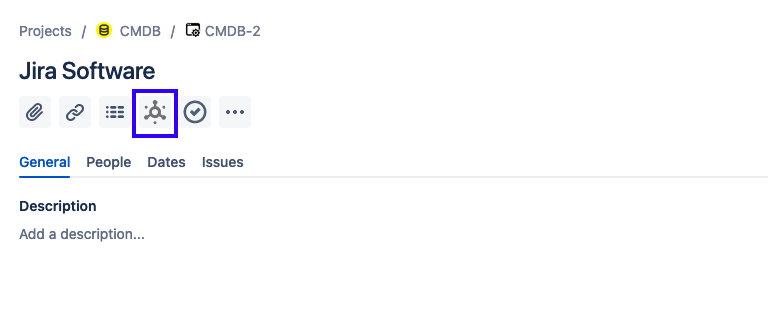The main configuration of a relation is the creation of one or two relation fields called Inward or Outward field. It reflects the start and end point of a relation. But before you create the relation fields, you first have to create the relation itself:
Create New Relations
To create new relations, please navigate to the app administration and choose “Relations”. Here you can see all relations already created. Click “Add Relation” to create a new relation:
Now you will see the following dialogue:
Relation: choose “Custom” in case you want to create a custom relation type (this is the main use case of our app).
Outward Issue Link: Imagine 2 issues A and B. The outward link is the direction from A → B.
Inward Issue Link: The inward link is the opposite direction from B → A.
Show in Graph: check the box to show your relation in graphs (checked by default).
Color: color of the relation if it is displayed in a graph.
Example
You want to connect applications with databases. Your relation name is “Application - Database”. So you have the outward link named “Application Database” which will link the application with databases connected to it. Vice versa you have the inward link named “Database used by” which will link the database with applications.
Set Relation Field Contexts
To make your relation work you have to define in which contexts your fields should appear. Going back to our example relation this means that we have to place our field “Application Database” in the screen(s) for the issue type “Application” and the field “Database used by” for the issue type “Database”. This way we link two issue types by linking two custom fields.
Unactived/activated indicates if your relation is searchable.
Click on the field you want to edit. Now you can add/delete or edit the relation field context:
Configure Relations
Until now your relation is not more than an empty structure. We will fill it with data in the next step. Click on “Edit STAGIL Assets Relation” to proceed with the configuration:
Data Logic
Under the Data Logic tab you can define the scope of your relation:
Maximum Selection: Defines, how many issues can be linked to the relation field.
Selectable Issues: Defines, what kind of issues you can select in the relation field.
Searching User: User, who is used to run the query from the step above. Can be used to apply further restrictions based on the users view permissions.
Out-of-Scope Strategy: Defines the strategy to keep or remove relations.
Display Style
Under the Display Style tab you can define the appearance of the issue panels that display relations in the issue view:
Panel: Relations (Left) / Relations (Right). Select if you want to display the relation table at the left or right side of your issue.
Display Style: Table / List / Table + pop-up
Rows per page: Select the max. amount of rows per page (rest will be shown with pagination).
Fields to show: Select the fields that should be displayed in the panel.
Issue Progress Bar: Sums up the progress of linked issues in panel based on status and visualizes it in a progress bar.
Add new: When you choose the display style "Table", you can allow users to create new assets directly at the table in the issue view. To enable this feature, please choose the project and the issue type that should be pre-selected in the create new issue screen that will appear after the user clicks on the small plus icon above the table.
Service Desk
In case you want to make your relation field available in Jira Service Management as well you can define projects and issuetypes in this menu.
Display Relations in Issue View
Use this button to display the relation in issue view:

